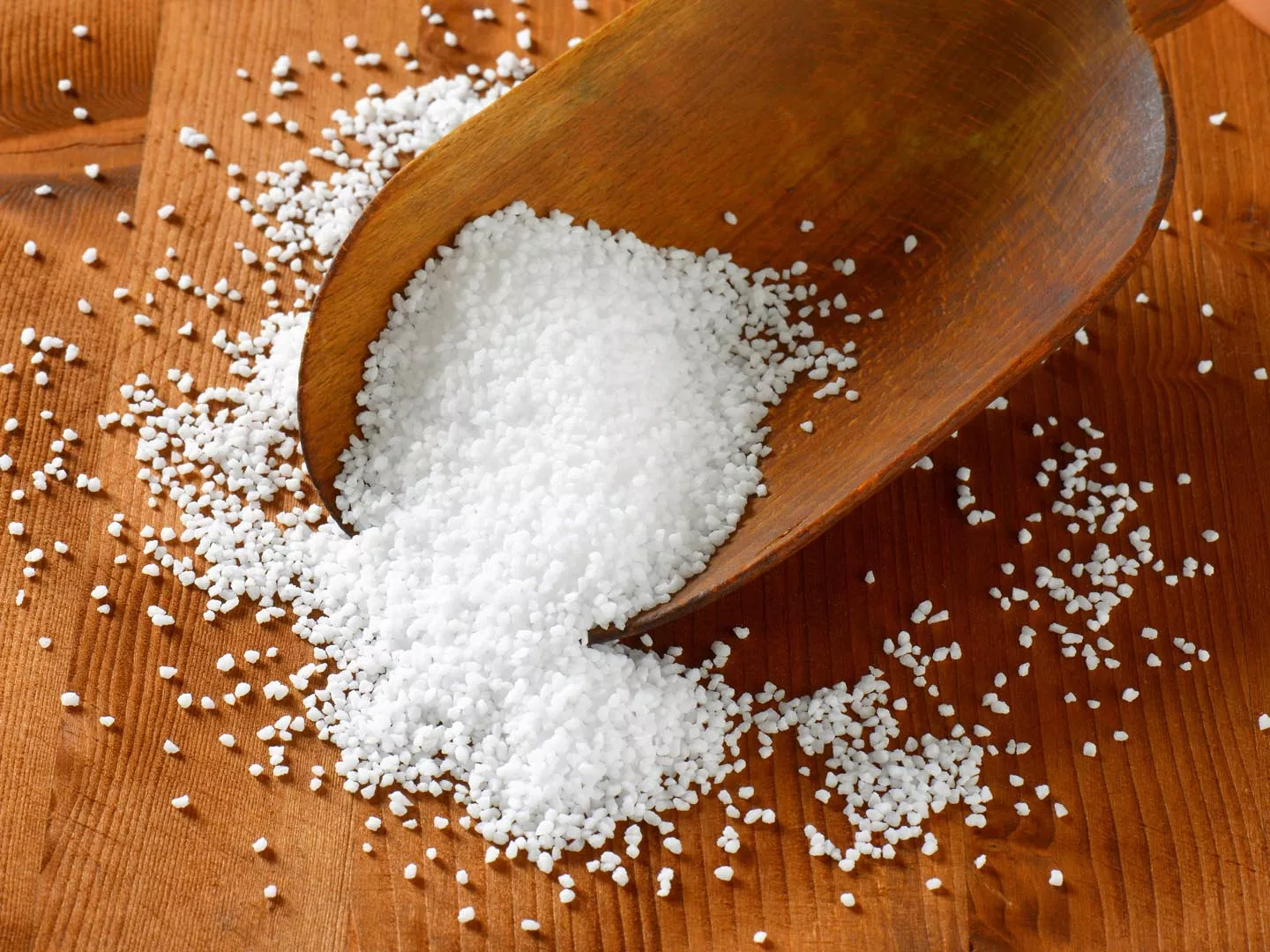Salt is a fundamental component of our diets, essential not only for enhancing the flavor of food but also for various bodily functions. However, not all salts are identical. The primary distinction lies between iodized salt and non-iodized salt. Understanding the difference between iodized salt and non-iodized salt is crucial for making informed dietary and culinary choices. This article explores the comprehensive differences between iodized salt and non-iodized salt, their health implications, culinary uses, and more.
What is Iodized Salt?
Iodized salt is table salt that has been fortified with iodine, an essential mineral necessary for the production of thyroid hormones. These hormones regulate metabolism, growth, and development. The iodization of salt began as a public health initiative to prevent iodine deficiency disorders.
Key Features of Iodized Salt
- Fortification with Iodine: Typically contains potassium iodide or sodium iodide.
- Health Benefits: Prevents iodine deficiency disorders such as goiter and hypothyroidism.
- Common Usage: Widely available and used in everyday cooking and baking.
What is Non-Iodized Salt?
Non-iodized salt refers to any salt that has not been fortified with iodine. This category includes various types such as sea salt, kosher salt, and Himalayan pink salt. Non-iodized salt may contain trace minerals depending on its source but lacks the added iodine found in iodized salt.
Key Features of Non-Iodized Salt
- Natural Composition: Includes sea salt, kosher salt, Himalayan salt, and others.
- Trace Minerals: May contain minerals like magnesium, calcium, and potassium.
- Varied Texture and Flavor: Offers different textures and subtle flavor profiles suitable for various culinary uses.
Detailed Comparison: Difference Between Iodized Salt and Non-Iodized Salt
To clearly understand the difference between iodized salt and non-iodized salt, let’s examine several key aspects:
| Feature | Iodized Salt | Non-Iodized Salt |
|---|---|---|
| Iodine Content | Contains added iodine (e.g., potassium iodide) | Does not contain added iodine |
| Taste and Texture | Fine-grained, consistent texture | Varies in grain size and texture |
| Culinary Uses | Ideal for general cooking and baking | Preferred for gourmet cooking and finishing dishes |
| Health Implications | Prevents iodine deficiency disorders | May provide trace minerals but lacks iodine |
| Shelf Life | Contains anti-caking agents for longer shelf life | May require specific storage conditions |
| Availability | Widely available in supermarkets | Available in specialty stores and online |
Health Benefits and Risks
Importance of Iodine in Diet
Iodine is essential for the production of thyroid hormones, which regulate vital metabolic processes. Adequate iodine intake is particularly important during pregnancy and early childhood for proper brain development.
Health Benefits of Iodized Salt
- Prevents Goiter: Reduces the risk of thyroid gland enlargement.
- Supports Metabolism: Aids in maintaining healthy metabolic rates.
- Ensures Proper Growth: Essential for growth and development, especially in children.
Health Risks of Non-Iodized Salt
- Iodine Deficiency: Lack of iodine can lead to thyroid issues and developmental problems.
- Reliance on Other Sources: Individuals must ensure they get sufficient iodine from other dietary sources if using non-iodized salt.
Risks of Excessive Salt Intake
Regardless of the type, excessive salt consumption can lead to high blood pressure, heart disease, and stroke. It is important to consume salt in moderation and choose varieties that align with your health needs.
Culinary Uses: Difference Between Iodized Salt and Non-Iodized Salt
Iodized Salt
- Best For: Everyday cooking, baking, and as a table condiment.
- Why: Its fine-grained texture ensures even distribution and consistent flavor in recipes.
Non-Iodized Salt
- Best For: Finishing dishes, gourmet cooking, and when specific textures and flavors are desired.
- Examples:
- Sea Salt: Adds a crunchy texture and rich flavor.
- Kosher Salt: Preferred for its larger crystals, ideal for seasoning meats.
- Himalayan Pink Salt: Offers a unique color and trace minerals, enhancing the visual appeal of dishes.
Choosing the Right Salt: Difference Between Iodized Salt and Non-Iodized Salt
When deciding between iodized salt and non-iodized salt, consider the following factors:
1. Health Needs
- Iodized Salt: Essential if you have an iodine deficiency or limited access to iodine-rich foods.
- Non-Iodized Salt: Suitable if your diet includes sufficient iodine from other sources like seafood, dairy, and eggs.
2. Culinary Preferences
- Iodized Salt: Ideal for recipes requiring precise measurements and consistent texture.
- Non-Iodized Salt: Best for enhancing flavors and adding texture to gourmet dishes.
3. Taste Preferences
- Iodized Salt: May have a slight metallic taste due to added iodine.
- Non-Iodized Salt: Often preferred for its purer taste and varied flavor profiles.
Summary of Differences Between Iodized Salt and Non-Iodized Salt
| Aspect | Iodized Salt | Non-Iodized Salt |
|---|---|---|
| Iodine Addition | Yes | No |
| Primary Benefit | Prevents iodine deficiency | Offers diverse flavors and textures |
| Common Types | Table salt | Sea salt, kosher salt, Himalayan salt |
| Usage in Cooking | General seasoning and baking | Finishing dishes and gourmet cooking |
| Health Consideration | Supports thyroid health | Requires alternative iodine sources |
Recommendations for Optimal Use
- Balanced Diet: Ensure adequate iodine intake through a balanced diet. Incorporate iodine-rich foods like seafood, dairy, and eggs if using non-iodized salt.
- Cooking Practices: Use iodized salt for recipes requiring precise measurements and non-iodized salt for enhancing flavors and textures in gourmet dishes.
- Health Considerations: Consult with a healthcare provider if you have thyroid issues or concerns about your iodine intake.
Conclusion
Understanding the difference between iodized salt and non-iodized salt is essential for both your health and culinary practices. Iodized salt plays a critical role in preventing iodine deficiency and supporting thyroid function, making it a vital component of a balanced diet. On the other hand, non-iodized salt offers a variety of flavors and textures that can enhance your culinary creations, especially in gourmet cooking. By considering your health needs, culinary preferences, and dietary sources of iodine, you can make informed choices between iodized salt and non-iodized salt to benefit both your well-being and your meals.
Frequently Asked Questions (FAQs)
1. What is the primary difference between iodized salt and non iodized salt?
The primary difference between iodized salt and non iodized salt lies in the addition of iodine. Iodized salt is fortified with iodine, an essential mineral that supports thyroid function and overall health. In contrast, non iodized salt does not contain added iodine and may include various trace minerals depending on its source. This distinction is important for individuals to ensure they receive adequate iodine in their diets.
2. Can I use non iodized salt if I am already getting enough iodine from other sources?
Yes, you can use non iodized salt if you are confident that your diet includes sufficient iodine from other sources such as seafood, dairy products, and eggs. Understanding the difference between iodized salt and non iodized salt helps you make informed choices based on your nutritional intake. However, if your diet lacks these iodine-rich foods, opting for iodized salt is beneficial to prevent iodine deficiency.
3. Does the difference between iodized salt and non iodized salt affect the taste of my food?
Yes, there can be a subtle difference in taste between iodized salt and non iodized salt. Iodized salt may have a slightly metallic taste due to the added iodine, which some people might notice in their food. On the other hand, non iodized salt often has a purer taste and can enhance the natural flavors of dishes without any additional metallic notes. Choosing between them depends on your taste preferences and the specific culinary application.
4. What are the health implications of choosing iodized salt over non iodized salt?
Choosing between iodized salt and non iodized salt has significant health implications. Iodized salt helps prevent iodine deficiency, which is crucial for thyroid health, metabolism, and cognitive development. Lack of iodine can lead to thyroid disorders such as goiter and hypothyroidism. On the other hand, non iodized salt does not provide this essential nutrient, so individuals relying solely on it must ensure they obtain adequate iodine from other dietary sources to maintain optimal health.
5. How should I store iodized salt compared to non iodized salt?
Storage requirements differ between iodized salt and non iodized salt due to their compositions. Iodized salt typically contains anti-caking agents that help prevent clumping, allowing it to be stored in a regular salt container at room temperature. Non iodized salt, especially varieties like sea salt or Himalayan pink salt, may require airtight containers to protect them from moisture and preserve their unique textures and flavors. Understanding the difference between iodized salt and non iodized salt ensures you store each type properly to maintain their quality and effectiveness.














